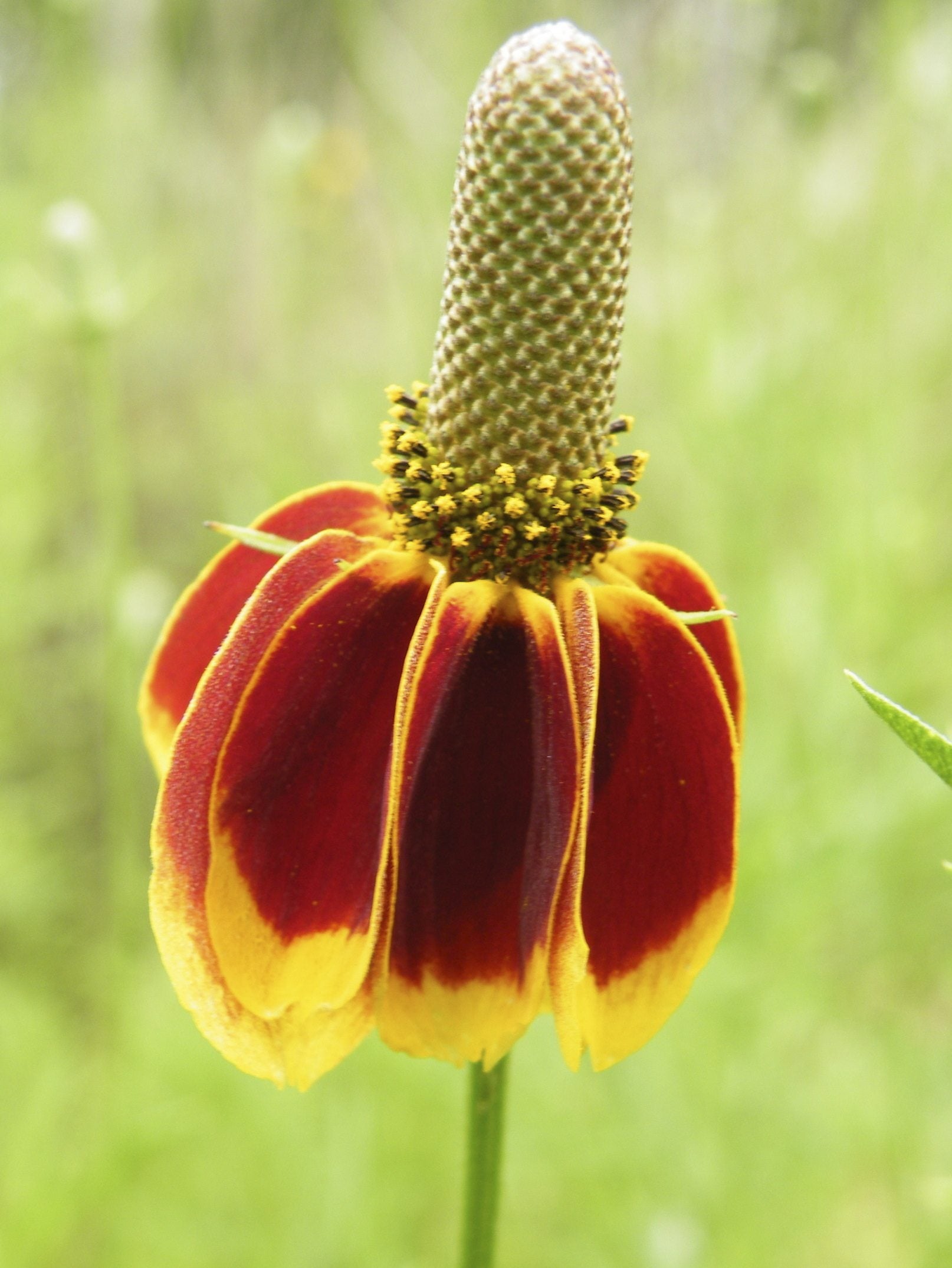Mexican Hat Plant Care: How To Grow A Mexican Hat Plant


The Mexican hat plant (Ratibida columnifera) gets its name from its distinctive shape-- a tall cone surrounded by drooping petals that look something like a sombrero. Mexican hat plant care is very easy, and the payoff is high, as long as you’re careful about spreading. Keep reading to learn more about how to grow a Mexican hat plant.
What is a Mexican Hat Plant?
Also called the prairie coneflower and thimble-flower, the Mexican hat plant is native to the prairies of the American Midwest, but it has spread throughout and can be grown in most of North America. Its characteristic shape is made up of a tall, leafless stalk that can reach 1.5 to 3 feet (46-91 cm.) in height, ending in a single flower head of a reddish brown to black spiky cone rising above three to seven drooping red, yellow, or red and yellow petals. Most cultivars are perennials, though a particularly harsh winter will kill it off. Its foliage-- deeply cleft leaves near the base-- has a strong odor that works as a fantastic deer repellent.
How to Grow a Mexican Hat Plant
The Mexican hat plant is a hardy wildflower and very easy to grow. In fact, the most likely problem is that it will crowd out weaker plants nearby. Plant it by itself or mingled with other strong, tall perennials that can stand up to it. Mexican hat plant care is minimal. It will grow in virtually any well-drained soil in full sun and is very drought tolerant, though regular watering during very dry periods will produce better flowers. You can grow Mexican hat plants from seed, though you may not see flowers until the second year. Spread the seed in autumn, lightly raking the soil to ensure a good mixture. If this sounds like something you’d like to try, use this Mexican hat plant information and grow some of your own for enjoyment year after year.
Gardening tips, videos, info and more delivered right to your inbox!
Sign up for the Gardening Know How newsletter today and receive a free copy of our e-book "How to Grow Delicious Tomatoes".

The only child of a horticulturist and an English teacher, Liz Baessler was destined to become a gardening editor. She has been with Gardening Know how since 2015, and a Senior Editor since 2020. She holds a BA in English from Brandeis University and an MA in English from the University of Geneva, Switzerland. After years of gardening in containers and community garden plots, she finally has a backyard of her own, which she is systematically filling with vegetables and flowers.
-
 Looking For Plants To Give You The Soft And Fuzzies? Try These 5 Fuzzy Leaf Plant Options
Looking For Plants To Give You The Soft And Fuzzies? Try These 5 Fuzzy Leaf Plant OptionsLovers of texture, drama, silver foliage and tactile plants will adore these special sensory garden additions. These fuzzy leaf plant options will leave you all aglow
By Susan Albert
-
 Get Ready For A Summer Of Hummers! Grow These Full Sun Hummingbird Plants and Flowers
Get Ready For A Summer Of Hummers! Grow These Full Sun Hummingbird Plants and FlowersIf you’re lucky enough to enjoy a sunny backyard, make sure you are maxing out on your pollinator opportunities and grow these full sun hummingbird plants and flowers
By Tonya Barnett